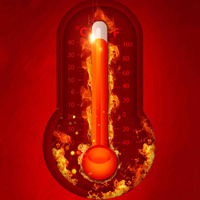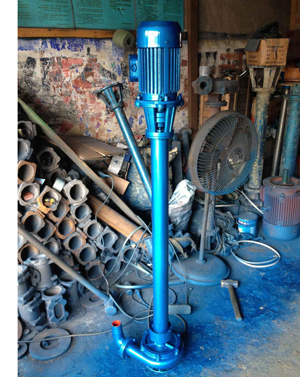Mud Pump Troubleshooting
Mud pumps are crucial equipment in various industries, including oil and gas drilling, construction, and mining. If you're experiencing issues with a mud pump, troubleshooting can help identify and resolve the problem. Here are some common mud pump problems and their potential solutions:
Low Pump Pressure
- Check for Blockages: Inspect the suction and discharge lines for any obstructions or blockages that may restrict flow.
- Impeller or Liner Wear: Excessive wear on the impeller or liner can reduce pump efficiency. Replace these components if necessary.
- Air Leaks: Air leaks on the suction side can cause low pressure. Seal any leaks or replace gaskets.
Overheating
- Insufficient Cooling: Ensure that the pump's cooling system is working correctly. Clean or replace the heat exchanger if needed.
- Oil Level: Check and maintain the oil level in the gearbox. Low oil levels can lead to overheating.
Vibration and Noise
- Misalignment: Inspect the pump and its components for misalignment, and realign as necessary.
- Loose Bolts: Tighten any loose bolts, especially on the pump base and mounting.
- Worn Bearings: Replace worn-out bearings to reduce vibration and noise.
Cavitation
- Insufficient NPSH: Ensure that the Net Positive Suction Head (NPSH) is adequate for the pump's requirements. You may need to reduce the pump speed or increase the suction pressure.
Leaking Seals or Gaskets
- Inspect for Damage: Check all seals and gaskets for visible damage or wear. Replace them as needed.
- Tighten Bolts: Make sure that all bolts and fasteners are properly tightened to prevent leaks.
Loss of Prime
- Suction Line Issues: Examine the suction line for leaks, loose connections, or air leaks. Address these issues to maintain prime.
Excessive Pump Wear
- Regular Maintenance: Implement a routine maintenance schedule, including the replacement of wearing components like liners, impellers, and seals.
Motor or Engine Issues
- Check Power Supply: Ensure the motor or engine is receiving the correct power supply. Verify that there are no electrical issues.
- Fuel Supply: For engine-driven pumps, check the fuel supply, filters, and injectors.
- Spark Plugs (if applicable): For gasoline or natural gas engines, inspect and replace spark plugs as needed.
Excessive Temperature Fluctuations

- Cooling System: Ensure the cooling system is functioning correctly. Clean radiators and check for any obstructions.
- Operating Conditions: Monitor and adjust the pump's operating conditions to prevent overheating or excessive cooling.
Precautions
Before starting the mud pump, please check if there are any obstructions in the inlet and outlet pipes, whether lubrication grease has been applied to the front and rear bearings, and if the stuffing box is filled. When the mud pump is in operation, it should be equipped with a high-pressure water pump to supply clean water at a pressure greater than that of the mud pump into the leak-proof stuffing, providing protection. Do not shut off the flushing pump while the mud pump is working; otherwise, it will rapidly wear out the sealing components. The clearance between the impeller and the liner has a significant impact on the lifespan of the mud pump. An unreasonable clearance can cause vibration and noise during pump operation, leading to rapid wear of flow components. Therefore, when replacing the impeller, attention should be paid to ensure that the clearance meets the drawing requirements. Clearance adjustment can be done through the adjusting screws on the rear bearing housing. The allowable suction lift for the mud pump is determined when pumping clean water, so the impact of mud on the suction capacity should be considered when pumping mud.
Maintenance and Repairs
Construction departments should have specialized maintenance personnel responsible for the upkeep and repair of construction machinery. Regular inspections and maintenance of mud pumps and other machinery should be conducted to promptly address any issues to avoid work stoppages. During construction, attention should be paid to the size of sand and sediment particles. When dealing with larger particles, vulnerable components of the mud pump should be inspected frequently to facilitate timely repairs or replacements. The main vulnerable components of the mud pump include the pump casing, bearings, and impeller. By employing advanced anti-wear measures, the service life of vulnerable components can be extended, reducing project costs and increasing production efficiency. It is also advisable to keep spare vulnerable parts on hand for timely replacements.
Always refer to your pump's user manual and consult with a qualified technician or engineer if you are uncertain about troubleshooting or making repairs. Safety should be a top priority when working on mud pumps, so follow appropriate safety protocols and use personal protective equipment when necessary. For more information about pumps, please visit the ATO.com.

